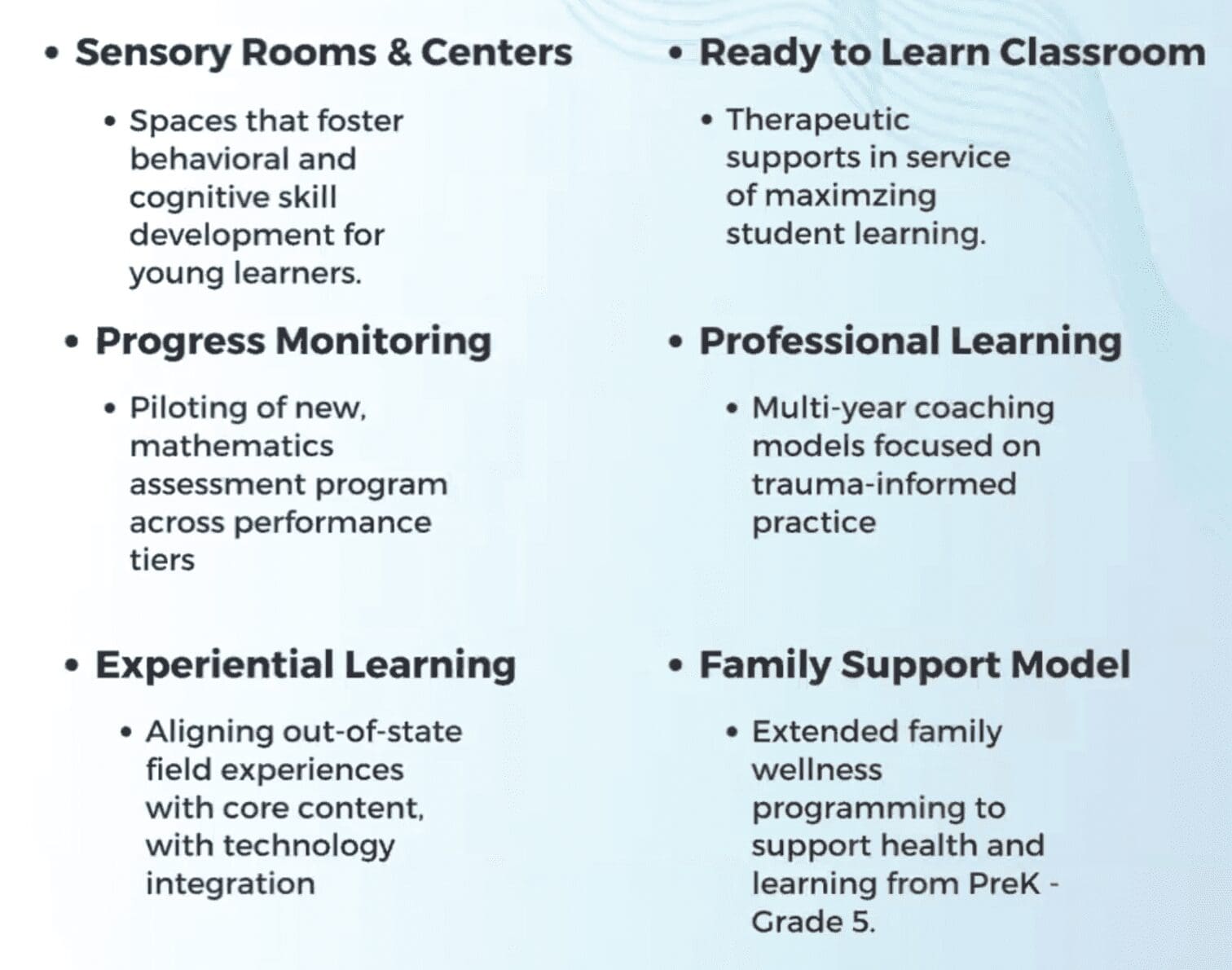
The WLC is ramping up efforts to build community councils and strengthen and establish community partnerships.
Partnership was the word of the night in the Wilmington Learning Collaborative’s January meeting Tuesday night.
Dorrell Green, superintendent of Red Clay Consolidated School District and a member of the governing council for the group, said they need to make sure they spend the millions of state funding wisely while strengthening community partnerships with groups that provide help, such as wellness centers, out-of-school activities and social services.
“I’m excited about continuing to engage in that work to ensure that our schools solidify partnerships that are going to not only look at during school, but after school as well as out of school time around that whole-community, whole-child approach.”
Red Clay – along with Brandywine and Christina – are the three districts that make up the collaborative, established in November 2022.
The group, which is penciled in for $10 million in Gov. John Carney’s recently announced 2025 recommended budget, is meant to improve academic and social outcomes for students of nine elementary schools in the city of Wilmington.
RELATED: Carney’s proposed $6.1 billion 2025 state budget up 9% from 2024
It hopes to do this by collaborating with community organizations and involving various stakeholders including parents in decision-making for policies and programs.
Partnership asset-mapping is one of the key components of the site-based community councils being established at the nine WLC schools.
“We have many partners doing great work within our school communities, and given the nuances and complexity of our days, those partners don’t always have a space to collaborate and to really braid their streams of work,” said Laura Burgos, the collaborative’s executive director. “We want to make sure that we do a deep dive on those assets that currently exist, so that when we’re structuring the community councils, those voices are present, and they play an active role in the design process.”
The asset-mapping, she said, will evaluate the current needs that are being served and identify those existing needs that are not served through the existing partnerships.
Each of the nine schools in the program will have a site-based community council to guide work in the school.
The 15-person governing council didn’t discuss who or how many people would be on them.
The group will discuss in February a new partnership opportunity with Children & Families First, a state social services organization.
“We want our nine school community councils to work collectively, then we started to see an opportunity to hire a director of networked communities and that would be a CFF staff member,” Burgos said.
Burgos said the collaborative is identifying family members to serve as part of the WLC Family Advisory Committee.
“This will be a virtual community that meets monthly,” she said. “We’re seeking up to three representatives from each of our nine schools, and family members, notice that I’m focusing on family as the larger umbrella. Of course, that includes parents, but we know that we have many different family structures and we want to honor that in the language that we use.”
Tuesday’s meeting also highlighted the first cycle of Innovation Project proposals.
These proposals were submitted by educator leader teams, which each school has. They are a core team of educators that are charged with supporting and creating a space where decisions can be made for school-based change initiatives.
The proposals were meant to come up with creative solutions to improve specific outcomes.
There’s expected to be two more innovation cycles throughout the school year.
Here’s some highlights from round one:

AJé English-Wynn, a Red Clay school board member – who’s not part of the collaborative’s council but attended the meeting – said she has experience with Children & Families First and was excited about the collaborative’s potential partnership with them.
She said the group is very data-driven, which will help with the WLC’s goals.
Green said, “You can’t boil the ocean,” and while it’s important to show that the millions of dollars of funding from the state is turned into action, sometimes strengthening existing partnerships and programs is also beneficial.
He pointed to Red Clay’s partnership with ChristianaCare, and said the mission and program activities that result from it could use some tweaking to align with the goals of the collaborative.
“When we leverage our partners that are already in existence across the three districts, it helps to build some of that common language and some of that common service and support,” said Dan Shelton, superintendent of Christina and a member of the governing council. “We have some existing partners, and we’re going to strengthen those, but we’re going to try to hold them accountable for getting the work moving forward and making sure that we’re all raising student achievement, because that’s our ultimate goal.”
Burgos has consistently said that each school has its own unique needs, which could result in different programming, but continuity and communication across all nine are paramount.
A website for the collaborative is also being developed and is expected to be launched in the near future.
The Wilmington Learning Collaborative’s next meeting is Tuesday, Feb. 20 at 6 p.m. Watch it here.

Raised in Doylestown, Pennsylvania, Jarek earned a B.A. in journalism and a B.A. in political science from Temple University in 2021. After running CNN’s Michael Smerconish’s YouTube channel, Jarek became a reporter for the Bucks County Herald before joining Delaware LIVE News.
Jarek can be reached by email at [email protected] or by phone at (215) 450-9982. Follow him on Twitter @jarekrutz
Share this Post




